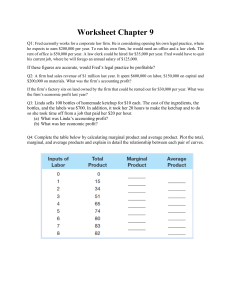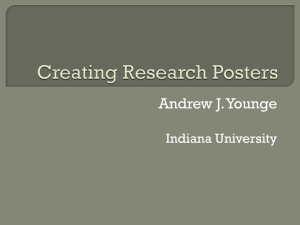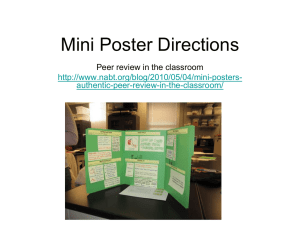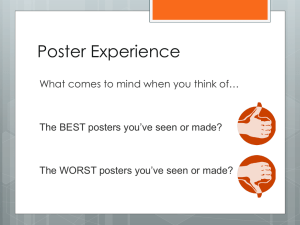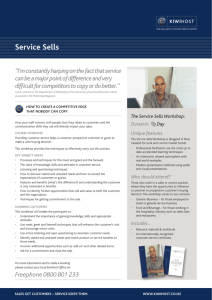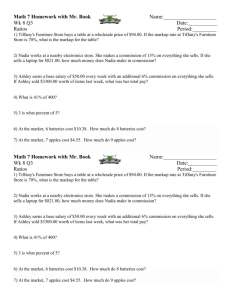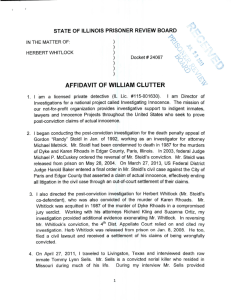Year 10 Finance (part 2) - Break Even Analysis
advertisement
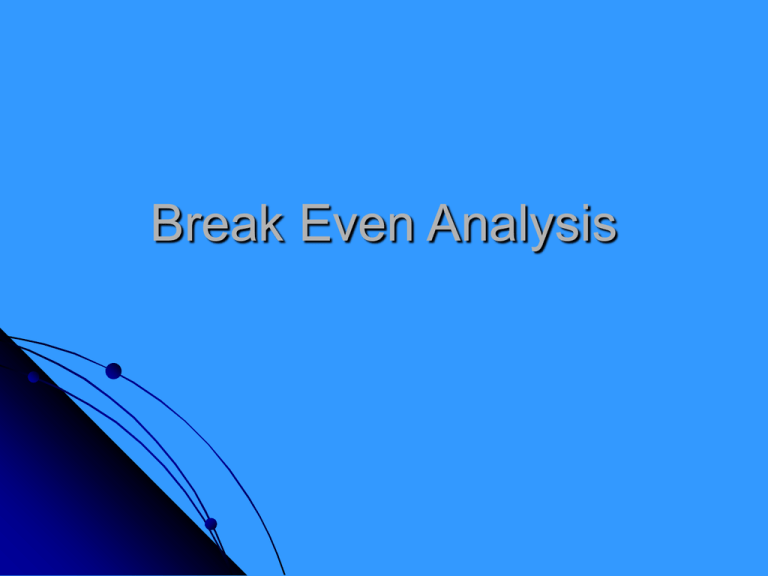
Break Even Analysis Learning Objectives In today’s lesson you will earn about: Re-cap of cost curves What is meant by revenue and how to calculate it What a revenue curve looks like and how to draw it Construction of a break even chart Costs Costs Total costs Variable costs Fixed costs output Total revenue The value of the goods or services a business sells Total Revenue = Price (of product) x quantity (sold) Example - if our previous example sells 10 of its product at £4 its revenue from this sale is; Total revenue = 10x £4 = £40 Total revenue and output (Firm X) Output (iPads) Total Revenue(£) 0 0 10 40 15 60 20 80 25 30 Exercise In our previous example lets assume that the firm we were looking at sells it’s product at £4 We’ll assume it sells all its output up to 30 units Ie when it produces 10 units it sells all 10 at £4 so its revenue is £40 Now draw a new table showing costs, output and revenue Plot the firm’s revenue curve on a new graph Revenue Curve Costs/price Total revenue output Break Even Chart Now plot all the firms cost curves and revenue curve on one big graph Use on side of A4 to do this Use different colours for your lines if possible You should have something that looks like this: Break Even Chart Costs/prices Profit( margin of safety) Total revenue Break even point Total costs loss Fixed costs output Break even output Explanation of Break Even Chart Shows the profit or loss made by the firm at each level of production The amount of profit is shown as the distance between the total revenue and total cost curves Where total revenue = total cost is the break even point I.e. neither profit or loss is made Above the break even point profit is made Below the break even point losses are made Exercise Caroline’s café 2 case study Tasks 1,2,3,4 Decision making with break even Shows the effects of changes in costs Shows the effect of changes in price/revenue limitations Assumes all of the product is sold Unexpected changes in costs can render the chart obsolete Break Even Formula Break even = Fixed Costs selling price – variable cost/unit Profit Profit=Total revenue-total costs Economists see profit as the reward to entrepreneurs for risk taken in organising the factors of production Land-rent, labour-wages, capital-interest, enterprise-profit Exercise Page 360 It Makes You Think Questions a, b,c,d,e Page 365 Heinemann textbook integrated activity Questions 1- 4 Question 1 Fixed Costs Van MOT Javeds Salary New photocopier Andrea’s salary Fax machine Drivers salary Heating Lighting New office carpet Tea bags Variable Costs Petrol Blank paper Electricity for the press Ken’s wages Telephone bill Printing ink Distribution wages Stationary Question 2 Break even = fixed costs/selling price variable cost/unit Break even = 100/1.50-1.20 = 333.3 i.e. 333.3 posters to break even Ben has accepted the order for 500 posters because he knows he will make a profit on every poster after 334 have been produced Question 3 Break even = fixed costs/selling price variable cost/unit New break even = 130/1.50-1.20 = 433.3 Yes Ben should still accept the order of 500 posters as he will make a profit on every poster after 434 have been produced Question 4 Break even = fixed costs/selling price variable cost/unit (a) BE = 100/1.40-1.20 = 500 posters (b) BE = 100/1.30-1.20 = 1000 posters Ben should suggest selling price of £1.40 in order to make a profit ( at £1.30 he will only break even)

